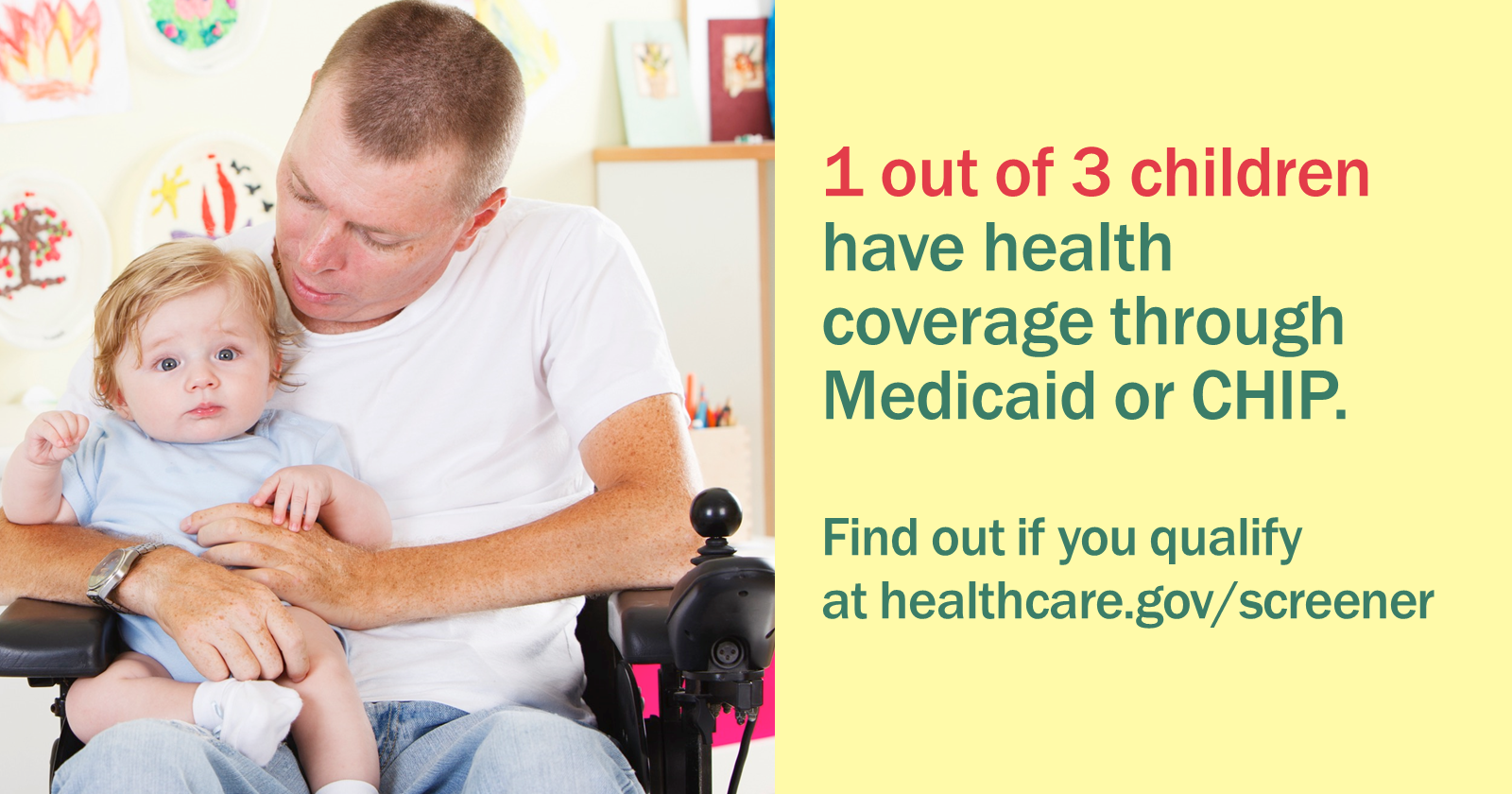PUBLIC HEALTH EMERGENCY IS ENDING – WHAT IT MEANS FOR MEDICAID/CHIP
A new report from the Georgetown University Center for Children and Families looks at what the end of the public health emergency in April could mean for children who are enrolled in Medicaid and/or CHIP. To read more about this report or for a link to it, check out our news item.
Speaking of Medicaid, did you know that Medicaid enrollment goes year-round? Even though Open Enrollment Year 9 (OE9) has ended, we are still letting people know about opportunities with Medicaid enrollment. AAHD is working with Community Catalyst to highlight opportunities for people to get access to health coverage. As part of this project, we have the resources you need to help with outreach on Medicaid enrollment. This outreach includes graphics like the one below which highlight just how many children are covered by Medicaid or CHIP. These graphics are available in the Community Catalyst Outreach Hub.
If someone does not qualify for Medicaid but still needs health insurance, there could be still ways to enroll. Generally, if someone experiences a major life event, they could qualify for a Special Enrollment Period (SEP). You can also learn more about what qualifies for a SEP as a result of a major life event in this blog post.
Last week, we highlighted a CMS announcement for a new SEP for low-income individuals. To learn more about this new SEP, check out our blog post.
It should be noted that while January 15 was the deadline to apply in states that are on the federally facilitated marketplace (healthcare.gov), some states which operate with their own state-based marketplace (SBM) have extended deadlines due to the COVID-19 pandemic. For example, Maryland had extended its open enrollment period due to the pandemic and their deadline for enrollment is this Monday, February 28. For a complete list of which SBMs still have opportunities for enrollment, check out our news item which we update as things change.
Previously, we highlighted the proposed 2023 Notice of Benefit and Payment Parameters. One of the things in the proposed rules was the Biden Administration’s commitment to doing more to ensure that ACA plans offer greater network adequacy. The Georgetown University Center on Health Insurance Reforms (CHIR) has a new article which looks at these changes could mean. To read more about it, check out the CHIR blog post.
Last week, CMS started a Request for Information (RFI) on access to care and coverage for people enrolled in Medicaid. You can read more about this RFI in the CMS press release. The RFI is open for 60 days which is April 18.
In case you missed it, we recently participated in a podcast with the Southwest ADA Center on discrimination in health care research. This podcast can be viewed on the Southwest ADA Center’s YouTube.
Archives of our weekly updates are available on the NDNRC website.

